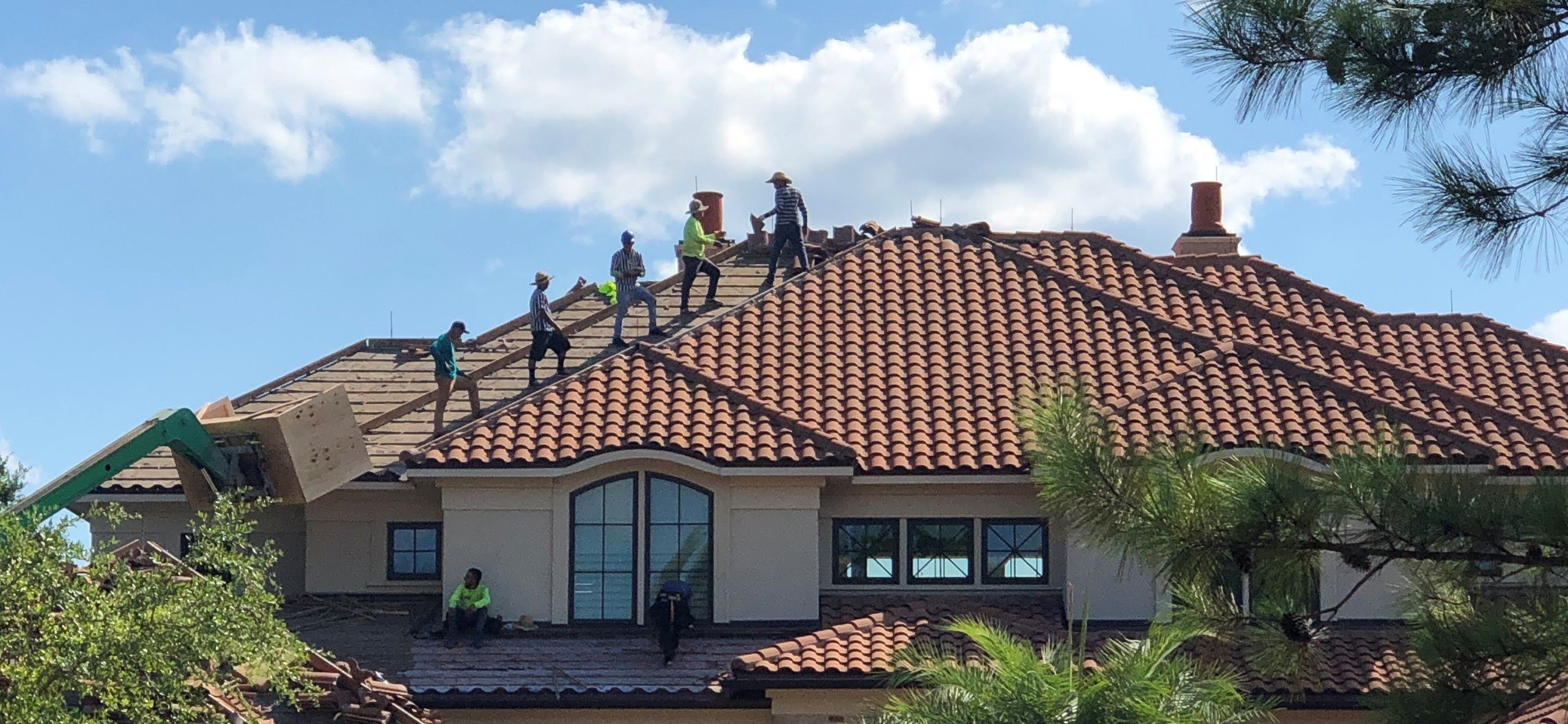Comparing Costs Amongst Roofing Companies in Gainesville Florida
Comparing Costs Amongst Roofing Companies in Gainesville Florida
Blog Article
Ideal Practices for Ensuring Proper Roof Air Flow
Making sure appropriate roof covering ventilation is vital for the long life and effectiveness of a roof covering system. A well balanced consumption and exhaust vent ratio, typically 1:300, plays a critical duty, with consumption vents preferably put at the lower side of the roofing for great air access and exhaust vents at the optimal for cozy air leave. Normal examinations to identify clogs and maintain clear air flow are critical. Additionally, keeping insulation away from vents is vital to prevent air movement limitation. Comprehending these foundational elements establishes the stage for even more thorough understandings into installment and maintenance techniques that can significantly boost your roofing system's performance.
Understand Ventilation Essentials
Appropriately understanding ventilation fundamentals is crucial for making sure the longevity and efficiency of roof covering systems. Effective ventilation reduces dampness accumulation and temperature extremes in the attic, both of which can result in considerable architectural damages gradually. A well-ventilated roofing system assists in protecting against typical concerns such as mold and mildew growth, wood rot, and ice dams, which can jeopardize the integrity of the roof materials and the underlying frameworks.
The key objective of air flow is to assist in the motion of air, permitting a regular exchange in between the exterior and indoor environments. This equilibrium is attained through a combination of intake and exhaust vents that collaborate to preserve ideal airflow. Consumption vents, normally situated along the soffits or eaves, allow fresh air to go into the attic room space, while exhaust vents, usually located at or near the roofing ridge, allow hot, damp air to leave.
Secret variables influencing the effectiveness of roofing air flow include proper placement, appropriate sizing, and making sure that both intake and exhaust vents are unblocked. Regular assessment and upkeep are crucial to determine possible clogs, damage, or inadequacies in the air flow system, thereby securing the roof covering's efficiency and toughness.
Kinds Of Roofing System Vents
Roofing vents play a critical duty in preserving efficient attic ventilation and, by expansion, the overall health and wellness of the roof system. Different types of roof vents are available, each with special benefits customized to specific roof covering needs.

Soffit vents are installed under the eaves and work in tandem with roofing vents to ensure a well balanced intake and exhaust system. By permitting cooler air to go into from below, soffit vents promote the expulsion of hot air with top vents. Gable vents, located on the outside wall surfaces of the attic, deal another efficient solution, particularly in homes with gable roof coverings.
Assess Your Current Ventilation

Next, take into consideration the age and condition of your roofing products and ventilation elements. Older systems may not adhere to current building codes or may have weakened gradually, minimizing their efficiency. Conduct a complete exam to identify any kind of indicators of wear and tear, such as corrosion, damage, or voids that can compromise the system's efficiency.
Additionally, determine the attic temperature and moisture degrees. High temperatures and moisture can indicate insufficient ventilation - roofing companies gainesville florida. Make use of a hygrometer and thermostat to obtain accurate readings, contrasting them with exterior conditions. Persistent discrepancies suggest possible issues that need addressing.
Installation Best Practices
Reliable installation of roof covering air flow systems is vital for guaranteeing optimum efficiency and longevity. Correct installation begins with comprehending the specific ventilation demands of the roofing and the structure it covers. This entails calculating the proper proportion of intake to tire vents, normally adhering to the 1:300 rule, which states one square foot of air flow for each 300 square feet of attic floor room.

The positioning of vents is equally crucial. Intake vents must be installed at the roof covering's reduced side, commonly in the soffits, to enable cool air to get in. Exhaust vents, on the various other hand, must be installed near or at the roofing system's optimal to help with the leave of cozy, moist air. This produces a natural air flow that aids keep temperature level and wetness equilibrium within the attic room.
Seal all vent connections meticulously to stop air leaks and prospective water seepage. Usage top quality products and follow manufacturer standards to guarantee sturdiness and performance. In addition, integrating ridge vents with baffles can significantly enhance air flow efficiency by preventing wind-driven rainfall and click here for more info snow from entering the attic room.
Ultimately, accurate installment of roof ventilation systems reduces prospective issues such as mold and mildew development, ice dams, and architectural damages, guaranteeing the roof covering's stability and the building's overall health.
Normal Maintenance Tips
Consistency in maintenance methods is basic to making sure the lasting performance of roofing air flow systems. Throughout these inspections, make certain that vents are cost-free of debris, nests, and various other blockages that could hamper airflow.
Cleaning the vents is an additional necessary task. Use a soft brush or a vacuum cleaner to remove dirt and particles from intake and exhaust vents. Beware not to damage the air vent screens or louvers during the find more info procedure. Additionally, examine the attic space for any kind of indicators of water damages, which could compromise the honesty of the roof.
Appropriate insulation is similarly crucial. Make sure that attic insulation does not obstruct the vents, as this can significantly limit air movement. If any insulation has actually moved or settled, rearrange or change it to preserve an efficient obstacle.
Lastly, change any kind of harmed or missing elements promptly. Busted vents, broken shingles, or deteriorated blinking can all add to poor air flow and must be attended to without hold-up. Routine upkeep ensures that the roofing ventilation system works efficiently, thus extending the lifespan of the roofing itself.
Verdict
Guaranteeing proper roof covering ventilation is critical for maintaining the performance and longevity of a roof covering system. Adherence to the 1:300 consumption and exhaust air vent ratio, coupled with the strategic placement of vents, is necessary. Routine biannual examinations, debris cleaning, and guaranteeing insulation does not block air flow are vital techniques. Applying these finest methods will certainly foster a well-ventilated roofing system, therefore alleviating potential issues associated to moisture buildup and too much heat, eventually extending the roof's life expectancy.
A well balanced intake and exhaust vent proportion, commonly 1:300, plays an essential duty, with intake vents preferably placed at the Home Page reduced side of the roof for amazing air access and exhaust vents at the optimal for warm air leave. Intake vents, usually located along the eaves or soffits, allow fresh air to go into the attic space, while exhaust vents, often situated at or near the roof ridge, allow warm, damp air to leave.
Soffit vents are set up under the eaves and job in tandem with roof covering vents to make sure a balanced intake and exhaust system. By enabling cooler air to get in from below, soffit vents facilitate the expulsion of warm air via top vents. Adherence to the 1:300 consumption and exhaust vent proportion, coupled with the strategic placement of vents, is vital.
Report this page